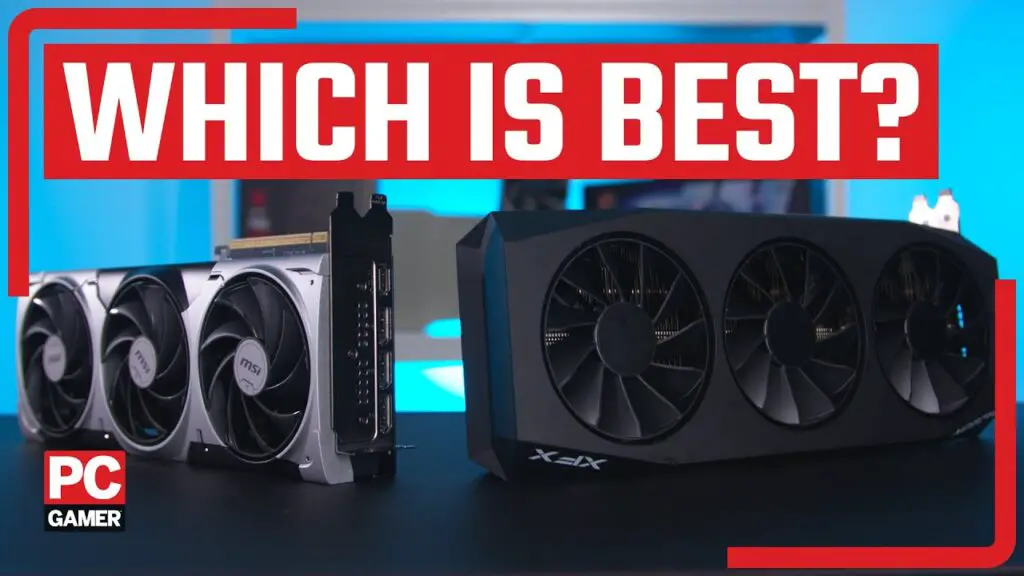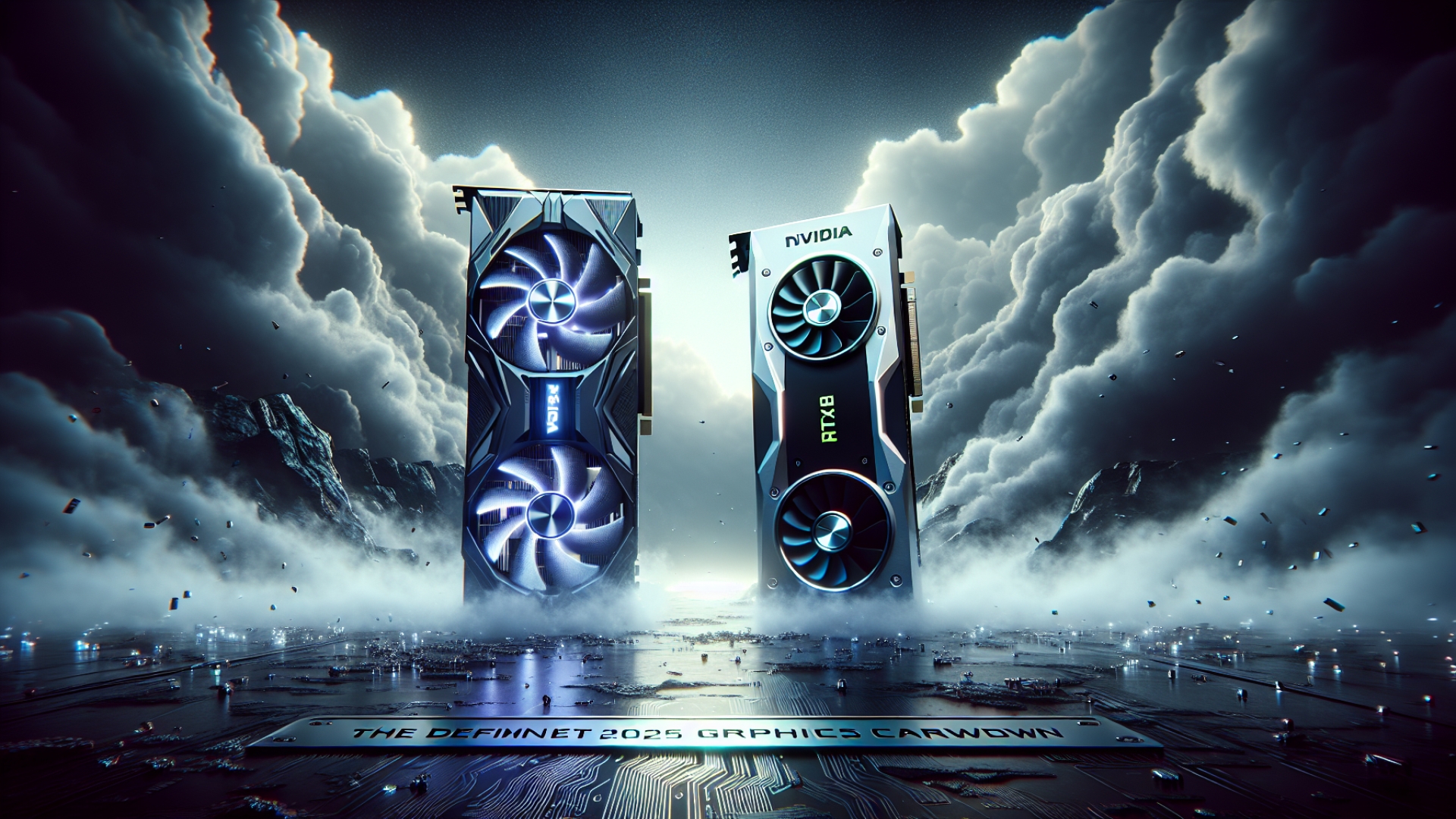Jump to:

At Digital Tech Explorer, we thrive on dissecting the latest hardware battles to help you make informed decisions. Today, our tech storyteller TechTalesLeo dives deep into a long-awaited graphics card showdown.
By TechTalesLeo, Digital Tech Explorer
It feels like it’s been a long time since we last had a genuine graphics card showdown between AMD and Nvidia. But here we are in 2025 and the Radeon RX 9070 XT is showing itself a true competitor to Nvidia’s RTX 5070 Ti, and that’s a GPU which is nominally far more expensive.
The green team has had it largely its own way for the past few generations, with the red side of the GPU divide only really able to compete if you take ray tracing and upscaling features out of the equation. Look back to the RTX 40-series vs. the RX 7000-series, and AMD itself will tell you that the only cards that were particularly well received were its more affordable RX 7800 XT and RX 7700 XT cards. And they were largely fighting on price, and maybe a little on performance and some VRAM numbers.
This time around, while AMD’s latest GPU is theoretically considerably cheaper than its Nvidia rival, it’s not just about the price. That’s become evident where scarcity has pushed them far closer together and there is still a lot of positive feeling towards the Radeon card. The price/performance numbers are seriously impressive right now, and not just with the usual caveats.
With the RX 9070 XT AMD has closed the gap on ray tracing performance, has upped its upscaling game, and is giving Nvidia a tough time. But the RTX 5070 Ti definitely has some aces up its sleeve and there are some very key points where the GeForce crew can point to huge frame rate leads, so as the price gap tightens, who should come out on top?
AMD RX 9070 XT vs Nvidia RTX 5070 Ti: Specs
In terms of specifications, things are pretty close between these two contenders. Both sport their respective manufacturers’ latest GPU architecture—RDNA 4 for AMD and RTX Blackwell for Nvidia—and both are decidedly mid-range graphics silicon. The chips themselves are very similar in size (365.5 mm2 for AMD vs. 378 mm2 for Nvidia) and pack a multitude of nominally 4 nm transistors. While shader counts appear disparate, this metric isn’t suitable for a direct apples-to-apples comparison due to architectural differences, even if the end results are similar.
There’s a notable difference in rated boost clock speeds, but this is more of an on-paper distinction. In our real-world testing at Digital Tech Explorer, both the RX 9070 XT and the RTX 5070 Ti samples hovered around the 2,600 – 2,700 MHz mark, essentially leveling the playing field on that front.
Memory configuration is where the biggest disparity lies, primarily in raw bandwidth. Both cards feature a 256-bit memory bus and 16 GB of video memory. However, the RTX 5070 Ti uses GDDR7 memory at 28 Gbps, while the RX 9070 XT employs older GDDR6 at 20 Gbps. This gives the Nvidia chip 40% more memory bandwidth, generally making it better suited for high-resolution gaming.
Regarding power draw, both cards are rated around the 300W mark: the RTX 5070 Ti at 285W and the RX 9070 XT with a TBP of 304W. In practice, however, our testing showed average power draw figures of 303W and 352W respectively.
AMD RX 9070 XT vs Nvidia RTX 5070 Ti: Price
The pricing landscape for these GPUs is more complex than their MSRPs suggest. Officially, the RTX 5070 Ti carries an MSRP of $750, already steep for a mid-range card, while the RX 9070 XT launched with a $599 MSRP, a figure that should have significantly undercut its Nvidia rival. A $150 price difference would heavily favor the AMD GPU if performance is comparable.
However, the reality of PC gaming hardware in 2025 is that on-shelf prices for both the RX 9070 XT and RTX 5070 Ti are disturbingly similar, and often much higher than their intended MSRPs. This is due to ongoing market scarcity and, according to manufacturers we spoke with, strategic decisions by card partners to raise prices post-launch, particularly for the RX 9070 XT. Consequently, seeing either card at its original MSRP this year seems unlikely.
As of Spring 2025, RTX 5070 Ti pricing at Amazon (US) often requires Prime membership for the best deals, with the RX 9070 XT on Amazon sometimes exceeding the RTX 5070 Ti’s original $750 MSRP, which itself can be found around $900. For Prime members, the $150 delta might persist, but for others, both cards often hover in the $900+ range. In the UK, the situation is somewhat better, with the RTX 5070 Ti occasionally available near its MSRP, but the RX 9070 XT remains well above its target price, resulting in nearly level real-world pricing for now.
AMD RX 9070 XT vs Nvidia RTX 5070 Ti: Performance
This is where the rubber meets the road. Relative pricing means little if gaming performance doesn’t deliver. Thankfully for AMD, its new RDNA 4 GPUs, like the RX 9070 XT, are built for a price-to-performance ratio that truly challenges Nvidia.
AMD has also significantly improved areas where past Radeon GPUs lagged. The ray tracing performance of the RX 9070 XT is much better, and we’re seeing the first integration of machine learning into AMD FidelityFX Super Resolution (FSR) with the new 4.0 version.
In pure, native performance, only the extremely demanding ray tracing in Cyberpunk 2077 shows a significant delta at 4K or 1440p. Otherwise, the frame rate difference is minimal. This gap narrows further when considering real-world performance with upscaling and frame generation.
Using standard 2x frame generation for both cards and a DLSS or FSR Quality setting, even Cyberpunk 2077 becomes a level race. In fact, the AMD card pulls ahead in Cyberpunk 2077 and F1 24, both of which heavily utilize ray tracing effects under these conditions.
However, these numbers for Cyberpunk 2077 and F1 24 on the AMD side use FSR 3 and its frame generation, which, while improving, don’t yet match the visual quality of Nvidia’s competing DLSS and more advanced Frame Generation technology. It’s crucial to note that FSR 4.0, with its machine learning enhancements, is still supported in very few games.
In terms of image quality alone, Nvidia’s upscaling and interpolation technology generally remains ahead of AMD’s. This advantage is amplified by the RTX Blackwell generation’s standout feature: Multi Frame Generation (MFG). MFG allows RTX 50-series cards to generate up to three additional AI frames between each rendered one. While debates about “fake frames” and smoothness persist, the result is a game that typically feels smoother and faster, provided the input frame rate isn’t excessively low, which can introduce latency.
The caveat is that, like FSR 4.0, MFG isn’t ubiquitous. However, it can be back-ported into games with existing Frame Gen support more easily, and it’s likely to be standard in major upcoming releases featuring Nvidia’s Frame Gen tech.
When it comes to general GPU performance metrics, the RTX 5070 Ti is the more efficient graphics card, offering lower power usage and a higher performance-per-watt. However, in the specific SKUs we tested (Asus designs for both), the RX 9070 XT ran slightly cooler in practice.
Arguably, the most significant performance difference emerges in creative workloads. The Nvidia GPU, benefiting from strong industry support, demonstrates an impressive lead in both AI image generation benchmarks and traditional Blender 3D rendering tests.
AMD RX 9070 XT vs Nvidia RTX 5070 Ti: Overclocking
Overclocking modern GPUs hasn’t always been impactful, often yielding marginal gains for extra heat and power. Previous generations frequently ran close to their thermal or power limits due to dynamic clock speeds, leaving little room for manual improvement.
This generation, however, is different for both Nvidia’s and AMD’s latest architectures. We’ve had great success overclocking both the RX 9070 XT and the RTX 5070 Ti, though they benefit from different approaches. AMD chips respond well to undervolting, which provides thermal headroom for automatic clock boosts, while Nvidia cards benefit from directly increasing the clock speed offset.
Both these GPUs can handle significant overclocking, potentially yielding an extra 10% in frame rates with minimal impact on temperature or power draw. This makes overclocking worthwhile, and there isn’t a vast difference in how far you can push either GPU. We have observed a slightly greater performance uplift from overclocking the Nvidia GPU, sometimes pushing an overclocked RTX 5070 Ti to near-native RTX 5080 frame rates.
AMD RX 9070 XT vs Nvidia RTX 5070 Ti: The Verdict
This is a surprisingly tricky final verdict. When I first reviewed the AMD RX 9070 XT, the calculation seemed simple: similar gaming performance to the RTX 5070 Ti for at least $150 less. However, scarcity has led to unforgivably high prices for both these impressive mid-range GPUs.
So, our verdict comes in two parts. First, which card would we at Digital Tech Explorer recommend right now? Currently, outside of specific member deals, there’s often little price difference between the RX 9070 XT and the RTX 5070 Ti—both are frequently priced offensively high, between $900 and $1,000.
If you had to buy one today and prices are equal, we’d lean towards the Nvidia card. This might not be the most popular opinion, but the GeForce GPU is more power-efficient, generally performs better in heavily ray-traced games, has an edge at 4K resolutions, and DLSS still offers superior visual fidelity, especially with FSR 4.0’s limited game support. Plus, it includes Multi Frame Generation. While “fake frames” are debatable, MFG can smooth out the experience significantly in compatible games, offering a better feel than the Radeon card unless pushing 4x frame gen on very low native frame rates.
This situation isn’t permanent, though. Someday, cards should be available closer to MSRP. When stock normalizes, it will be hard to ignore a considerably cheaper RX 9070 XT. Away from current inflated GPU pricing, the RDNA 4 GPU’s competitiveness with the RTX 5070 Ti and its excellent potential price/performance mean the smart money would pick the AMD card if it hits its target price. It’s a great gaming GPU, overclocks/undervolts admirably, and you don’t need a premium factory-overclocked model to achieve this. AMD has crafted a fantastic card that deserves success—if only its price truly normalizes.
—
Disclaimer: All content on Digital Tech Explorer is for informational and entertainment purposes only. We do not provide financial or legal advice.
Affiliate Disclaimer: Some of the links on Digital Tech Explorer are affiliate links. This means we may earn a commission if you click through and make a purchase, at no additional cost to you. Our recommendations are based on thorough research and personal experience.

